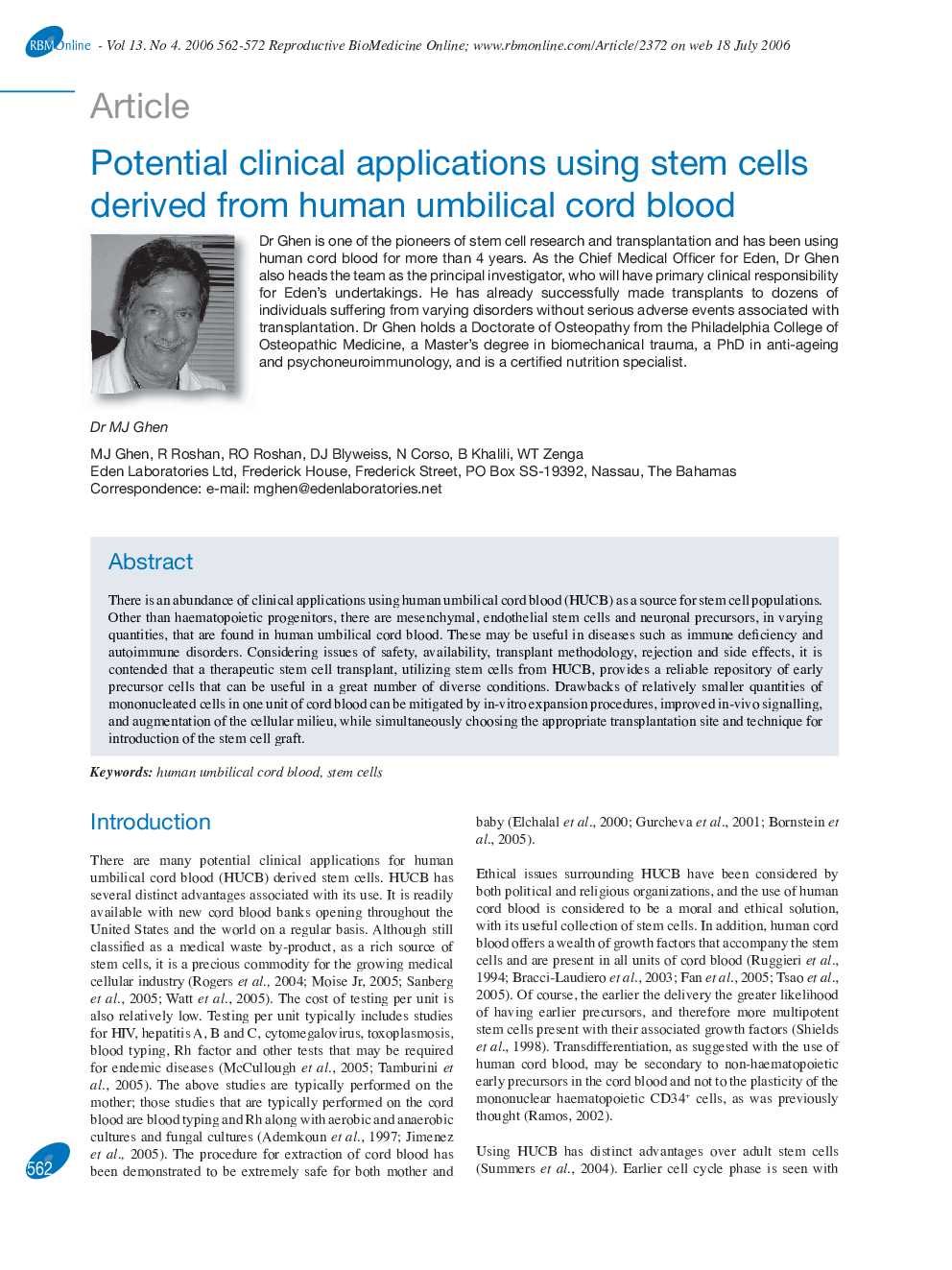| Article ID | Journal | Published Year | Pages | File Type |
|---|---|---|---|---|
| 3973446 | Reproductive BioMedicine Online | 2006 | 11 Pages |
There is an abundance of clinical applications using human umbilical cord blood (HUCB) as a source for stem cell populations. Other than haematopoietic progenitors, there are mesenchymal, endothelial stem cells and neuronal precursors, in varying quantities, that are found in human umbilical cord blood. These may be useful in diseases such as immune deficiency and autoimmune disorders. Considering issues of safety, availability, transplant methodology, rejection and side effects, it is contended that a therapeutic stem cell transplant, utilizing stem cells from HUCB, provides a reliable repository of early precursor cells that can be useful in a great number of diverse conditions. Drawbacks of relatively smaller quantities of mononucleated cells in one unit of cord blood can be mitigated by in-vitro expansion procedures, improved in-vivo signalling, and augmentation of the cellular milieu, while simultaneously choosing the appropriate transplantation site and technique for introduction of the stem cell graft.
